
4 minute read
RIVER OF FISH Homosassa—
Sights Include Iconic Monkeys, Convalescing Manatees and One Very Old Hippo
Written by: Dave Kelly
Just north of the hustle and bustle of Tampa lies a little village that is the perfect opposite of big-city madness—Homosassa, Florida, in Citrus County. During the 1800s, it was the home of flourishing sugarcane plantations and mills, and many of the world’s pencils were produced from the area’s vast cedar groves in the early 20th century. Now, it is home to fishing charter captains, quaint resorts, “Old Florida” history and … monkeys. But more on that later.
At the center of all the action lies the Florida Cracker Riverside Resort. Tucked up to the main river just a few miles from Homosassa Bay and the Gulf of Mexico, the resort offers the best of the region’s amenities, all the while staying true to its “Old Florida” roots. The attached full-service marina has everything you need for outdoor activities—from boat, kayak and paddleboard rentals to scalloping equipment and manatee tours.
The resort itself has 54 rooms, many within steps of the marina dock. More than 80 boat slips, two boat ramps and room to park a trailer provide the outdoor fanatic with everything he or she could need to experience this river town’s best.
We checked into our suite and were thrilled to find that it was perfectly laid out for our week’s trip. Bedroom and bathroom were separate from the huge sitting area, and a complete kitchen with full-size fridge ensured that we could stock up early and have everything we needed for the week at our fingertips. The breathtaking river view from our front porch topped it all off.
The Florida Cracker Riverside Resort bills itself as the “Home of World-Famous Monkey Island”—and we soon found out why. As you sit enjoying your classic stone-baked pizza and your beer at the Florida Cracker Monkey Bar, you are only a stone’s throw from this iconic attraction.
Originally created by developer G.A. “Furgy” Furgason in the 1960s, the island was designed to keep boats from running aground in the bend of the river. Soon after, monkeys from Homosassa Springs Wildlife State Park upriver were relocated because of their ornery behavior. Monkeys do not like to swim, so the river keeps them separated from the mainland, and monkeys have been on the island for more than 50 years.
Currently, five spider monkeys inhabit the island, three of which are from the original relocation. The monkeys are under the care of the resort and are fed twice a day with a special healthy diet.
Homosassa means “river of fish” in the native Seminole tongue, and there is no shortage of fish in this town. We hooked up with Capt. Don Chancey of Flats Chance Charters to try our luck with the seatrout and redfish in the area. On our leisurely trip out to the Gulf, we passed houses that are built on the isolated islands of Homosassa Bay.

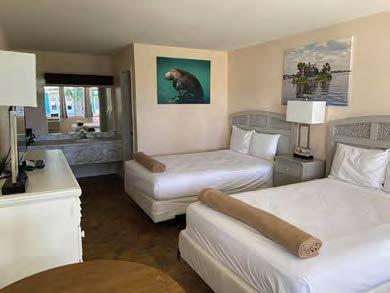

The captain explained that the project of getting electricity to these homes was simple compared to the challenge of keeping fresh water available for their inhabitants. Although some of the houses were long ago abandoned, there are dozens of beautiful, unique homes that are still occupied to this day.
Capt. Don took us straight to one of his honey holes to drop our lines. We soon had our first redfish on board and, despite overcast weather, we shortly snagged our limit for the day. Not wanting to stop there, we asked Don what else might be biting. We headed across the bay to another sweet spot, this time for seatrout. The captain’s familiarity with the area, along with his correct choice of bait for each species of fish, ensured our success. We took our catch back and had it fried up at a local restaurant.
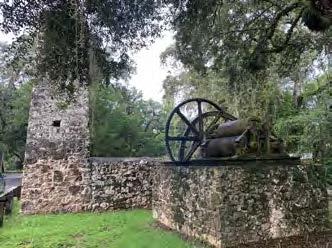
INTERESTINGLY, THE MANATEES STAY AT THE PARK ONLY LONG ENOUGH TO HEAL FROM WOUNDS OR TRAUMA. AFTER THAT, THEY ARE RELEASED BACK INTO THE WILD. AND THE PARK IS HOME TO FAMOUS LU THE HIPPOPOTAMUS, ITS ONLY NON-NATIVE RESIDENT, WHO HAS BEEN ENTERTAINING VISITORS SINCE 1964. HE IS THE OLDEST HIPPO IN CAPTIVITY IN NORTH AMERICA AND SOUTH AMERICA.
The inclement weather persisted into the next day, so we had to cancel our scalloping trip with Capt. Carey Gibson and his Southern Slam Outfitters skiff. However, we met with the captain over a beer, to discuss Homosassa’s scalloping history, and we learned much from this savvy veteran of the waters.
He told us that seven major spring boils flow into the Homosassa River, providing crystal-clear, pure water. Bay scallops are “very particular” and need to live in near-perfect conditions to thrive. Scalloping is done in about 6 feet of water, where the live animals are scooped into mesh bags by snorkelers and hoisted aboard boats.
Once the boat’s limit is met, it is time to head back to the docks. There, expert shuckers prepare your catch to be served up in one of the many local restaurants. Scallop season in Florida runs from July 1 through Sept. 25.
Surprisingly, the Homosassa River is only about 9 miles long. Its headwaters begin at Ellie Schiller Homosassa Springs Wildlife State Park, one of the smallest but busiest of Florida’s 175 state parks. We met up there with our guide, Kate Sprat, who gave us a tour of its grounds.
We headed out on the 1-mile walking path that circles three of the spring heads that form the Homosassa. Unlike most state parks, Homosassa Springs is more of a nature preserve and is home to hundreds of native wildlife species. We encountered endangered Florida panthers, red wolves, whooping cranes, black bears and gators, as well as three captive manatees.
Interestingly, the manatees stay at the park only long enough to heal from wounds or trauma. After that, they are released back into the wild. And the park is home to famous Lu the hippopotamus, its only non-native resident, who has been entertaining visitors since 1964. He is the oldest hippo in captivity in North America and South America.
A trip to Homosassa should include a stop at Yulee Sugar Mill Ruins Historic State Park. Built in 1851 by U.S. Sen. David Levy Yulee, the large steam-driven mill ran until 1864. It produced sugar, syrup and rum-producing molasses for export throughout the U.S. The farm was largely destroyed during the Civil War, but ghostly ruins of the mill still stand by the roadside.
If you are planning a Florida road trip to check out small-town hospitality and history, Homosassa should definitely make your itinerary! FCM
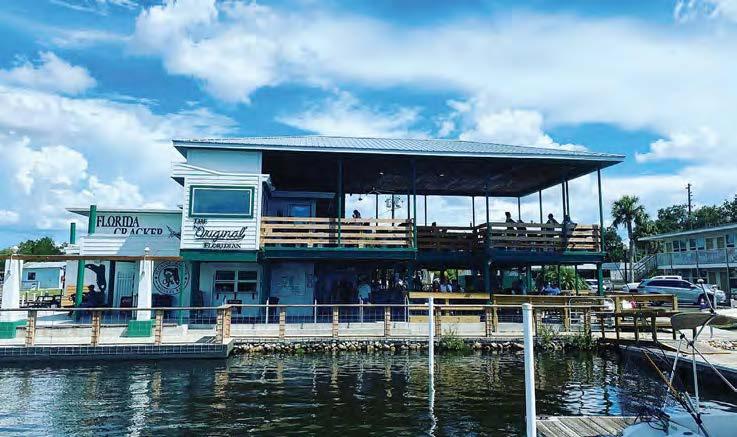
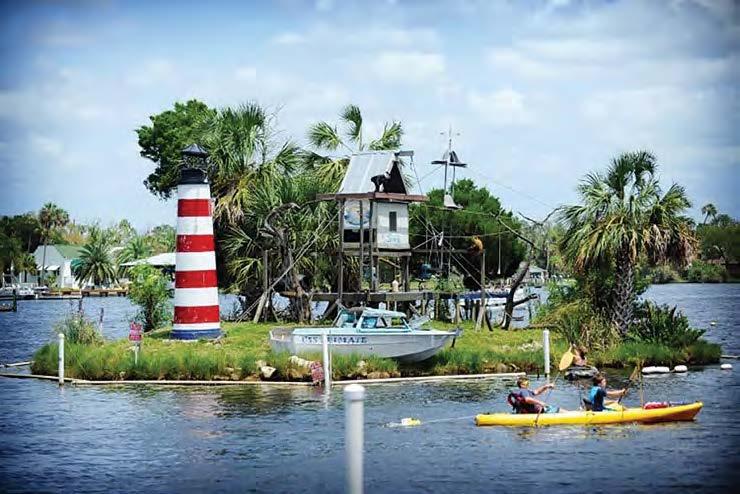
ROUNDUP:
Florida Cracker Riverside Resort 5297 S. Cherokee Way
Homosassa, Florida
352-628-2474 floridacrackerriversideresort.com
Flats Chance Charters
Capt. Don Chancey 352-303-9399 flatschance.com
Southern Slam Outfitters
Capt. Carey Gibson 352-361-0731 southernslamoutfitters.com
Ellie Schiller Homosassa Springs
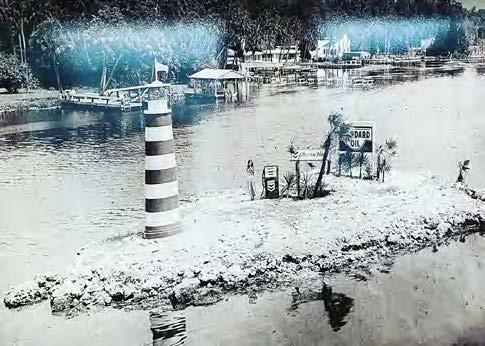
Wildlife State Park
9350 W. Fishbowl Drive
Homosassa, Florida
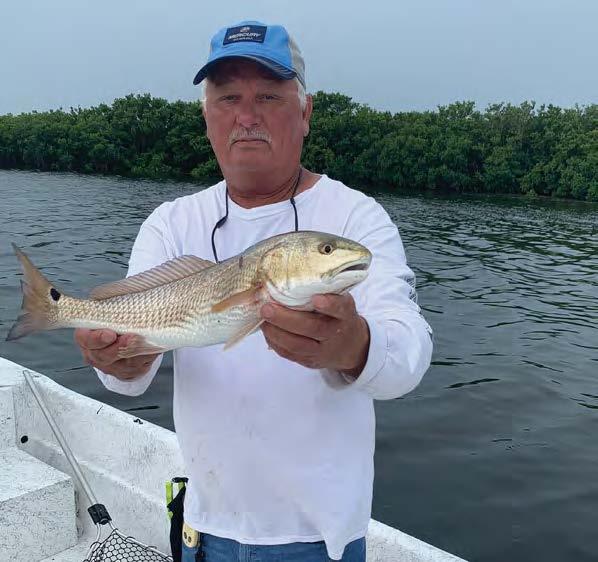
352-628-2311 floridastateparks.org









